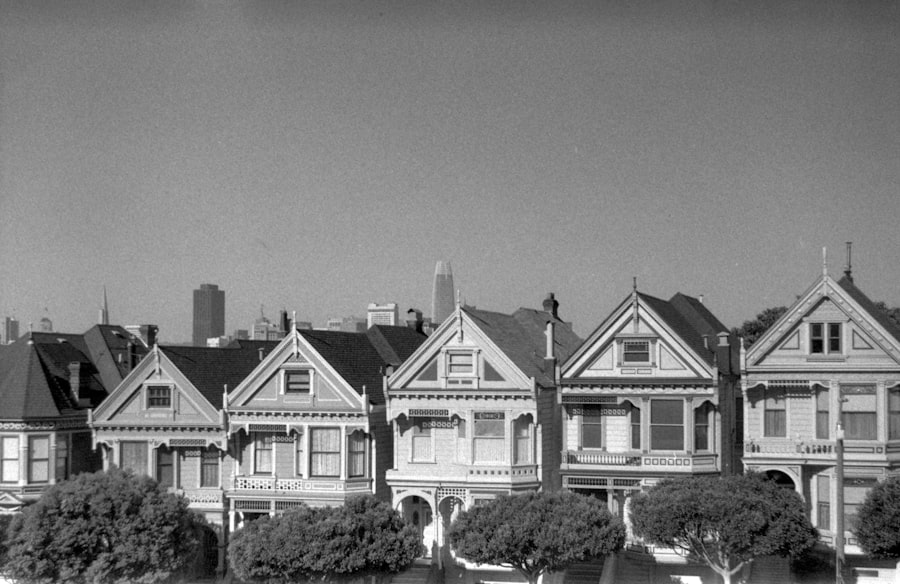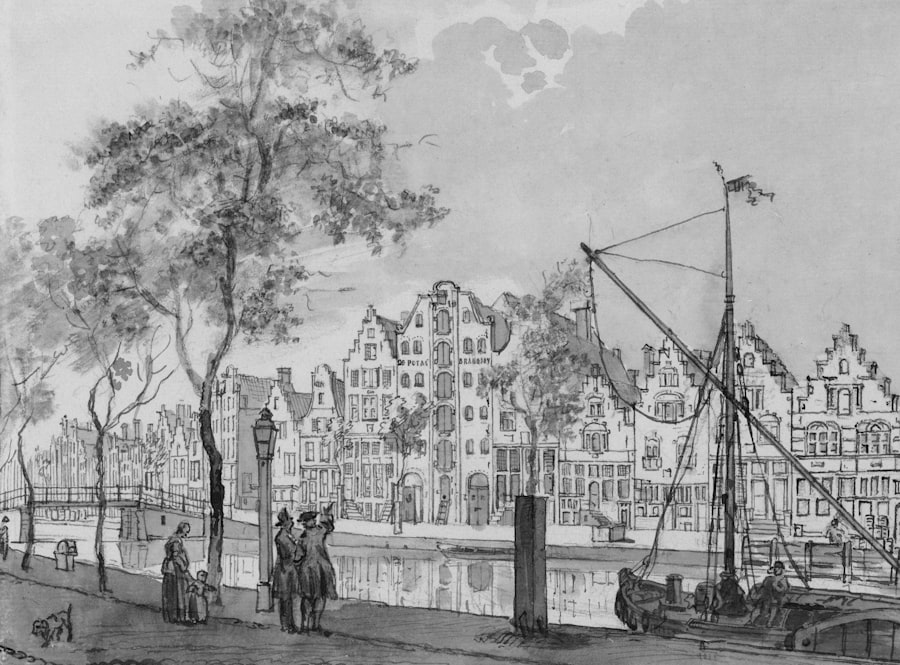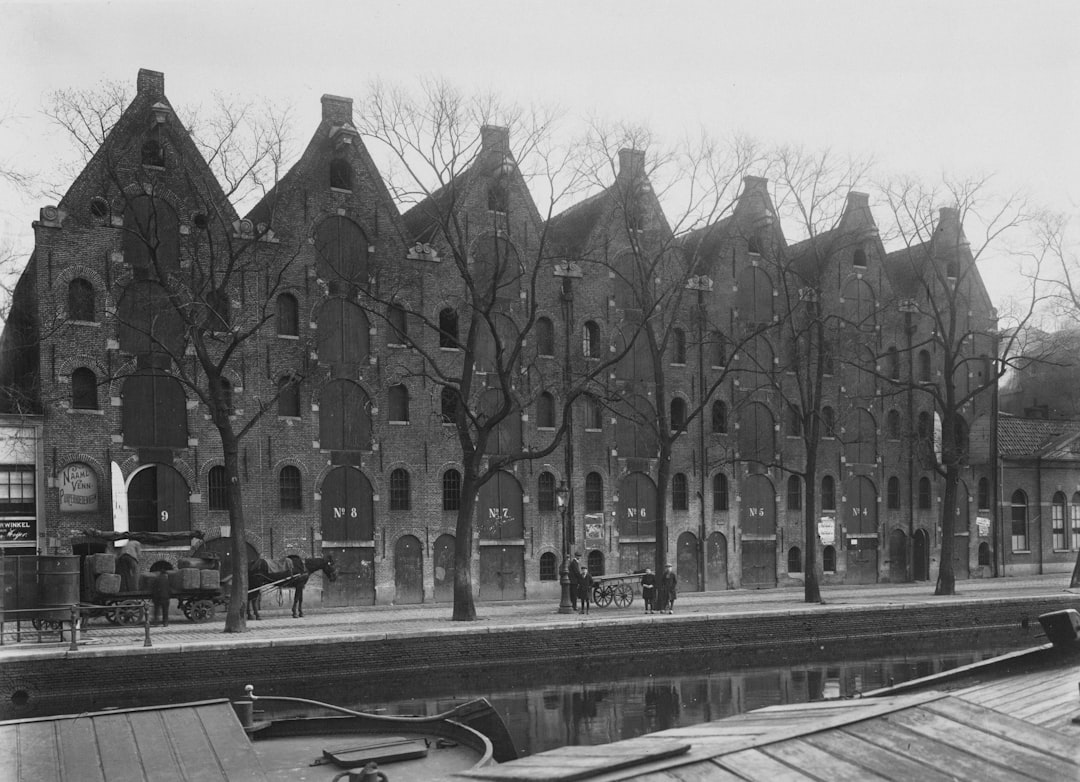Zoning laws in New York City serve as a critical framework for urban planning and development, dictating how land can be used and what types of structures can be built in various neighborhoods. These regulations are designed to promote orderly growth, protect the character of communities, and ensure that land use aligns with the city’s broader goals for sustainability and livability. As one of the most densely populated cities in the world, New York City faces unique challenges that necessitate a robust system of zoning laws.
These laws not only influence the skyline but also impact the daily lives of millions of residents, shaping everything from housing availability to commercial development. The complexity of New York City’s zoning laws reflects its diverse neighborhoods and the myriad interests of its residents, businesses, and government entities. Over the years, these regulations have evolved in response to changing social, economic, and environmental conditions.
Understanding the history and development of zoning laws in NYC provides valuable insight into the city’s ongoing efforts to balance growth with preservation, equity, and sustainability. This article will explore the evolution of zoning regulations in New York City, highlighting key milestones and their implications for urban development.
Key Takeaways
- Zoning laws in NYC regulate land use and building construction to promote orderly development and protect the character of different neighborhoods.
- Early zoning regulations in NYC were focused on controlling building height and density to address issues such as overcrowding and lack of sunlight on the streets.
- The 1916 Zoning Resolution was a landmark regulation that established setback requirements to allow light and air to reach the streets and led to the iconic “wedding cake” style of skyscrapers in NYC.
- The 1916 Zoning Resolution had a significant impact on the city’s skyline, shaping the iconic look of Manhattan and influencing urban planning and architecture worldwide.
- Amendments and revisions to zoning laws in the 20th century aimed to address new challenges such as transportation, affordable housing, and historic preservation in NYC.
Early Zoning Regulations in NYC
The origins of zoning regulations in New York City can be traced back to the late 19th and early 20th centuries when rapid industrialization and urbanization began to transform the landscape. As neighborhoods became increasingly crowded, concerns about public health, safety, and quality of life emerged.
In response to these challenges, early zoning efforts sought to establish guidelines that would separate incompatible uses and promote more orderly development. One of the first significant attempts at zoning in New York City occurred in 1916 with the introduction of the Zoning Resolution. However, prior to this landmark legislation, various local initiatives aimed to address specific issues related to land use.
For instance, the Tenement House Act of 1901 sought to improve living conditions in overcrowded tenements by imposing regulations on building design and sanitation. These early efforts laid the groundwork for more comprehensive zoning regulations that would follow, reflecting a growing recognition of the need for structured urban planning.
The 1916 Zoning Resolution

The 1916 Zoning Resolution marked a pivotal moment in New York City’s approach to land use regulation. It was the first comprehensive zoning code in the United States, designed to address the challenges posed by rapid urban growth and the rise of skyscrapers. The resolution aimed to prevent overcrowding and ensure that light and air reached street level by establishing height and bulk restrictions on buildings.
It introduced a system of zoning districts that categorized areas based on their intended use—residential, commercial, or manufacturing—thereby creating a framework for organized development. The 1916 Zoning Resolution also included provisions for setbacks, which required buildings to be set back from the street as they rose higher. This design feature not only enhanced the aesthetic appeal of the city but also allowed for greater access to natural light and ventilation.
The resolution was a response to public outcry over the construction of tall buildings that blocked sunlight and air from reaching lower levels. By establishing clear guidelines for building height and density, the 1916 Zoning Resolution laid the foundation for future zoning practices in New York City.
The Impact of the 1916 Zoning Resolution on NYC
| Aspect | Impact |
|---|---|
| Building Height | Regulated the height of buildings, leading to the iconic skyscrapers of NYC. |
| Building Density | Controlled the density of buildings, shaping the city’s urban landscape. |
| Open Space | Required open spaces in new developments, improving quality of life for residents. |
| Street Width | Set requirements for street width, influencing the city’s transportation infrastructure. |
The impact of the 1916 Zoning Resolution on New York City was profound and far-reaching. It fundamentally altered the city’s architectural landscape by influencing the design and construction of buildings for decades to come. The introduction of height restrictions and setback requirements led to a distinctive skyline characterized by iconic skyscrapers that adhered to these regulations.
Notable examples include the Empire State Building and the Chrysler Building, both of which exemplify the principles established by the 1916 resolution. Moreover, the zoning resolution played a crucial role in shaping urban neighborhoods by delineating areas for specific uses. This separation of land uses helped mitigate conflicts between residential and commercial activities, contributing to a more organized urban environment.
However, it also had unintended consequences, such as exacerbating socioeconomic disparities by concentrating low-income housing in certain areas while allowing wealthier neighborhoods to flourish. As a result, while the 1916 Zoning Resolution achieved its goal of promoting orderly development, it also highlighted the complexities and challenges inherent in urban planning.
Amendments and Revisions to Zoning Laws in the 20th Century
Throughout the 20th century, New York City’s zoning laws underwent numerous amendments and revisions in response to evolving urban dynamics and societal needs. As the city continued to grow and change, it became evident that the original 1916 Zoning Resolution required updates to address new challenges such as population density, transportation infrastructure, and economic shifts. These amendments often reflected broader trends in urban planning, including a growing emphasis on mixed-use development and community engagement.
One significant revision occurred in 1961 when a new zoning resolution was adopted to replace the outdated 1916 code. This comprehensive overhaul aimed to simplify zoning regulations while providing greater flexibility for developers. The 1961 Zoning Resolution introduced new zoning districts and allowed for more mixed-use developments, reflecting a shift towards integrating residential and commercial spaces.
Additionally, it established mechanisms for community input in the zoning process, recognizing the importance of local voices in shaping urban development.
The 1961 Zoning Resolution

The 1961 Zoning Resolution represented a transformative moment in New York City’s approach to land use regulation. By replacing the antiquated 1916 code with a more modern framework, this new resolution sought to address contemporary urban challenges while promoting sustainable growth. One of its key features was the introduction of “as-of-right” development, which allowed property owners to build according to predetermined zoning regulations without requiring special permits or variances.
This streamlined process aimed to encourage investment and development while reducing bureaucratic hurdles. Furthermore, the 1961 resolution emphasized flexibility by allowing for mixed-use developments that combined residential, commercial, and community spaces within single projects. This shift reflected changing attitudes towards urban living and recognized that vibrant neighborhoods often thrive when diverse uses coexist harmoniously.
The resolution also included provisions for open space requirements, ensuring that new developments contributed to public parks and recreational areas—a crucial consideration in a densely populated city like New York.
Changes in Zoning Laws in Response to Urban Development
As New York City continued to evolve throughout the latter half of the 20th century and into the 21st century, its zoning laws adapted to meet emerging urban development trends. The city faced numerous challenges related to housing shortages, gentrification, and environmental sustainability—all of which necessitated thoughtful revisions to existing regulations. In response to these issues, city planners began exploring innovative approaches to zoning that prioritized inclusivity and resilience.
One notable trend was the rise of inclusionary zoning policies aimed at addressing affordable housing shortages. These policies incentivized developers to include affordable units within new residential projects by offering density bonuses or other benefits. Such measures sought to create mixed-income communities while combating displacement caused by rising rents in gentrifying neighborhoods.
Additionally, zoning laws began incorporating sustainability considerations, encouraging green building practices and promoting energy-efficient designs as part of broader efforts to combat climate change.
Zoning Laws and the Preservation of Historic Buildings in NYC
Zoning laws also play a vital role in preserving New York City’s rich architectural heritage. As one of the most historically significant cities in the United States, NYC is home to countless landmarks and historic districts that reflect its diverse cultural narrative. To protect these invaluable assets from inappropriate development or demolition, specific zoning regulations have been established that govern alterations to historic buildings and sites.
The Landmarks Preservation Commission (LPC) is responsible for overseeing these regulations and ensuring that any changes made to designated landmarks adhere to strict guidelines that maintain their historical integrity. Zoning laws work hand-in-hand with landmark designation processes to create buffers around historic districts, preventing incompatible developments from encroaching on these treasured areas. This synergy between zoning regulations and preservation efforts underscores New York City’s commitment to honoring its past while accommodating future growth.
Zoning Laws and Affordable Housing in NYC
The issue of affordable housing remains one of New York City’s most pressing challenges, prompting ongoing discussions about how zoning laws can be leveraged to create more equitable housing opportunities. As property values soar and demand for housing continues to outpace supply, city officials have recognized that traditional zoning practices must evolve to address this crisis effectively. Various initiatives have emerged aimed at increasing affordable housing stock through innovative zoning strategies.
One approach has been the implementation of mandatory inclusionary housing (MIH) policies that require developers to set aside a percentage of units as affordable when constructing new residential buildings in designated areas. This policy aims not only to increase affordable housing availability but also to promote socioeconomic diversity within neighborhoods. Additionally, rezoning efforts have targeted underutilized or vacant lots for residential development, further expanding opportunities for affordable housing creation while revitalizing neglected areas.
Recent Trends in Zoning Laws in NYC
In recent years, New York City’s zoning laws have continued to evolve in response to shifting demographics, economic pressures, and environmental concerns. One notable trend has been an increased focus on sustainability within zoning regulations as city officials seek ways to combat climate change while promoting resilient urban development. Initiatives such as green building codes and incentives for energy-efficient designs have gained traction as part of broader efforts toward sustainable urban planning.
Moreover, there has been a growing emphasis on community engagement in the zoning process. Recognizing that local residents possess valuable insights into their neighborhoods’ needs and aspirations, city planners have sought greater collaboration with communities when developing or amending zoning regulations. This participatory approach aims not only to enhance transparency but also to ensure that zoning decisions reflect the diverse voices of those who live and work in affected areas.
The Future of Zoning Laws in NYC
Looking ahead, the future of zoning laws in New York City will likely be shaped by ongoing challenges related to housing affordability, climate resilience, and social equity. As urban populations continue to grow and evolve, city officials will need to strike a delicate balance between promoting development and preserving community character. Innovative approaches such as form-based codes—focusing on building form rather than land use—may gain traction as planners seek flexible solutions that accommodate diverse needs while fostering vibrant neighborhoods.
Additionally, addressing issues related to racial equity will be paramount as city leaders work towards dismantling systemic barriers that have historically marginalized certain communities through discriminatory zoning practices. By prioritizing inclusive policies that promote equitable access to housing and resources across all neighborhoods, New York City can pave the way for a more just urban future. In conclusion, zoning laws have played an integral role in shaping New York City’s development over time—reflecting both its rich history and its aspirations for a sustainable future.
As these regulations continue to evolve in response to contemporary challenges, they will remain essential tools for fostering vibrant communities that honor both heritage and progress.
New York City’s zoning laws have a rich and complex history, reflecting the city’s evolving priorities and challenges over the decades. These laws have been instrumental in shaping the urban landscape, influencing everything from building heights to land use. For those interested in delving deeper into the intricacies of NYC’s zoning history, a related article can be found on MyGeoQuest. This article provides valuable insights into how zoning regulations have transformed the cityscape over time.
